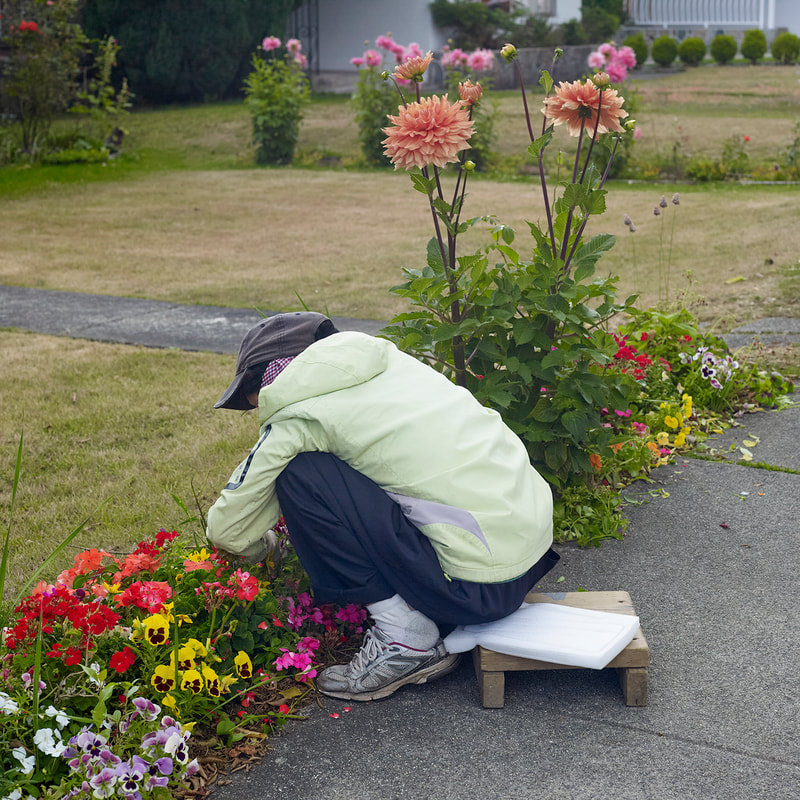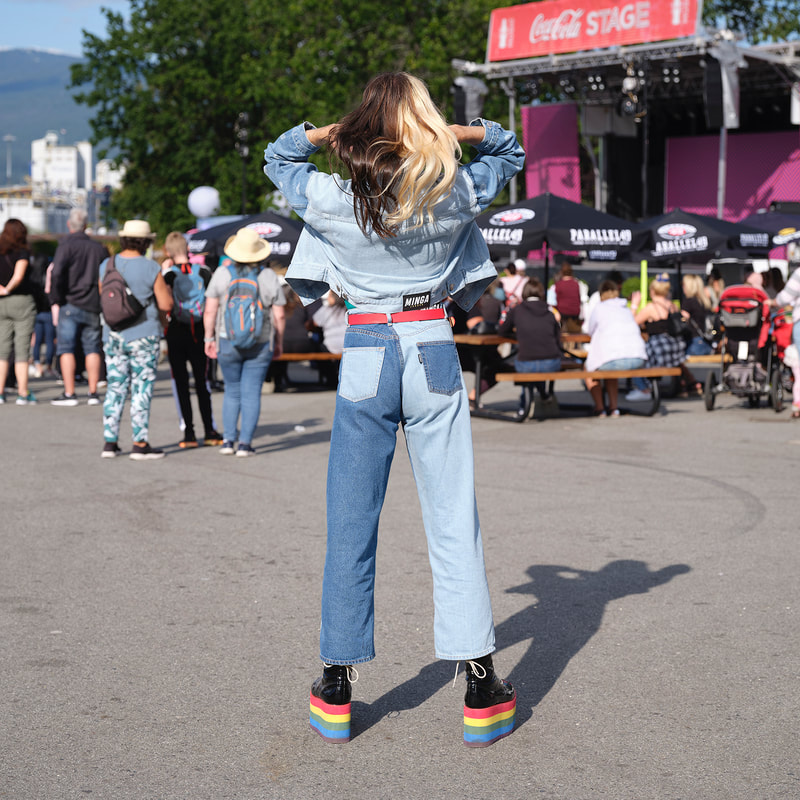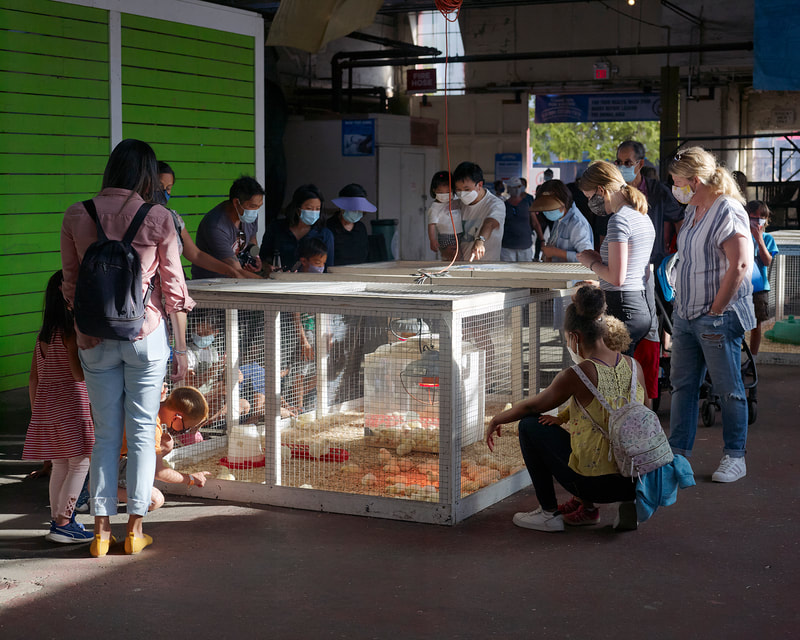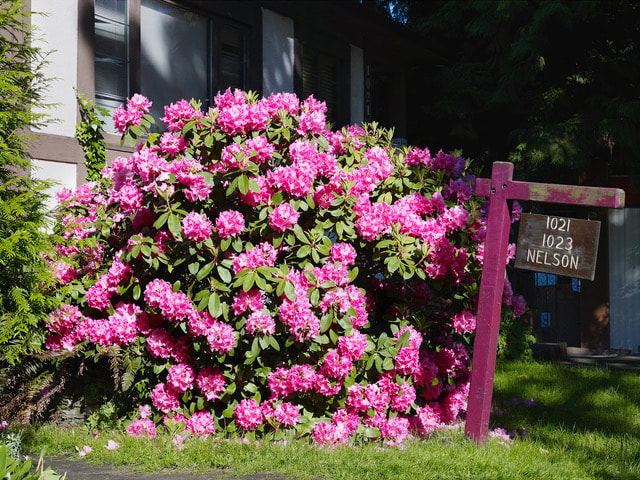Henry Mah
Based in Canada, Henry Mah has enjoyed a 30 year career as an art photographer and multi-disciplinary artist. Mah graduated with a Bachelor of Fine Arts from Emily Carr University’s prestigious photography program in 1995.
In his current art photography practice, Mah relies on both instinct and pre-calculation to survey vernacular scenes and urban topographies. Using natural light and available subjects, Mah’s photographs suggest an artful objectivity as he seeks to find the curious in the commonplace and the charged mystery in chance moments. As a street photographer with a formalist bent, Mah’s willfully casual portraits of people caught unaware and unvarnished feel both detached and intimate, discerning the grand intricacy of everyday life in scenes teeming with detail, drama and visual splendour.
For Mah, the ordinary world contains a coded language made up of art historical references, latent connections and private associations. Mining this territory with a careful eye, Mah makes the familiar and prosaic strangely compelling.
In his current art photography practice, Mah relies on both instinct and pre-calculation to survey vernacular scenes and urban topographies. Using natural light and available subjects, Mah’s photographs suggest an artful objectivity as he seeks to find the curious in the commonplace and the charged mystery in chance moments. As a street photographer with a formalist bent, Mah’s willfully casual portraits of people caught unaware and unvarnished feel both detached and intimate, discerning the grand intricacy of everyday life in scenes teeming with detail, drama and visual splendour.
For Mah, the ordinary world contains a coded language made up of art historical references, latent connections and private associations. Mining this territory with a careful eye, Mah makes the familiar and prosaic strangely compelling.
Past Exhibition at MRG
Parts of a City
July 9 - August 6, 2022 | Strathcona
Mónica Reyes Gallery is delighted to showcase Henry Mah's newest work at its Strathcona location not far from where most of the images were captured. Mah whose strong relationship to Vancouver and its photography history dates back to over two decades now, same amount of time our Director has known Henry, therefore this first solo exhibition is both professional and personal.
"For street artists, capturing the beauty and nostalgia of the working class is essential in uncovering the identity of the inhabitants of a city. With Covid and the inherent racism, I’m giving prominence to my own culture and other marginalized communities who weren’t welcome in other parts of the city, those which appear to be on the cusp of disappearing altogether through cultural destruction and gentrification. Parts of a City uncovers the beauty and aspects of play, work, identity and current affairs of the world as seen through the scope of the East Vancouver community." (Henry Mah)
In the relatively recent history of photographic image-making in Vancouver, certain parts of the city have been cultural hubs for artists and galleries. From Mount Pleasant to Hastings Sunrise, many of the neighbourhoods that have influenced the creative output of visual artists and a style of photography unique to works from the region, are situated in East Vancouver. Today, the artistic centre has moved to Strathcona with several galleries and studios tucked away in the busy streets. Working in conversation with the local history of documentary photography, Henry Mah’s exhibition “Parts of a City” at Mónica Reyes Gallery captures people and places that are part of the ever-changing, and sometimes disappearing, cultural fabric of Vancouver.
Artists like Fred Herzog, Jack Lindsay and Greg Girard’s early photographs documented the atmosphere and moods of the city and were an integral part of the rich history of Vancouver photography. This group of artists worked in and around East Vancouver, which has historically been made of up of a working class and newly immigrated communities. For street artists, capturing the every day life is essential in uncovering the identity of the inhabitants of a city. And while the inhabitants of Vancouver are constantly shifting, there are still people and places that Mah is interested in representing as part of his own narrative.
More recently, with Covid and the overt racism experienced by Asian Canadians in Vancouver and abroad, Mah has focused on giving prominence to his own culture and other marginalized communities who haven’t been welcome in all neighbourhoods, those which appear to be on the cusp of disappearing through cultural destruction and gentrification. “Parts of a City” uncovers aspects of play, work, identity and current affairs of the world as seen through the scope of Mah’s photographic lens.
For nearly a decade during the 2000s, Mah lived and worked in East Vancouver. To triangulate the distance between Chinatown where Mah often ate and shopped, it seems like a serendipitous moment that nearly a decade later Mónica Reyes Gallery in Strathcona where he now presents this work, is within that ratio area. “Parts of a City” evokes a nostalgia for the way things were while also opening up a dialogue of how we may bring our roots forward into the future.
"For street artists, capturing the beauty and nostalgia of the working class is essential in uncovering the identity of the inhabitants of a city. With Covid and the inherent racism, I’m giving prominence to my own culture and other marginalized communities who weren’t welcome in other parts of the city, those which appear to be on the cusp of disappearing altogether through cultural destruction and gentrification. Parts of a City uncovers the beauty and aspects of play, work, identity and current affairs of the world as seen through the scope of the East Vancouver community." (Henry Mah)
In the relatively recent history of photographic image-making in Vancouver, certain parts of the city have been cultural hubs for artists and galleries. From Mount Pleasant to Hastings Sunrise, many of the neighbourhoods that have influenced the creative output of visual artists and a style of photography unique to works from the region, are situated in East Vancouver. Today, the artistic centre has moved to Strathcona with several galleries and studios tucked away in the busy streets. Working in conversation with the local history of documentary photography, Henry Mah’s exhibition “Parts of a City” at Mónica Reyes Gallery captures people and places that are part of the ever-changing, and sometimes disappearing, cultural fabric of Vancouver.
Artists like Fred Herzog, Jack Lindsay and Greg Girard’s early photographs documented the atmosphere and moods of the city and were an integral part of the rich history of Vancouver photography. This group of artists worked in and around East Vancouver, which has historically been made of up of a working class and newly immigrated communities. For street artists, capturing the every day life is essential in uncovering the identity of the inhabitants of a city. And while the inhabitants of Vancouver are constantly shifting, there are still people and places that Mah is interested in representing as part of his own narrative.
More recently, with Covid and the overt racism experienced by Asian Canadians in Vancouver and abroad, Mah has focused on giving prominence to his own culture and other marginalized communities who haven’t been welcome in all neighbourhoods, those which appear to be on the cusp of disappearing through cultural destruction and gentrification. “Parts of a City” uncovers aspects of play, work, identity and current affairs of the world as seen through the scope of Mah’s photographic lens.
For nearly a decade during the 2000s, Mah lived and worked in East Vancouver. To triangulate the distance between Chinatown where Mah often ate and shopped, it seems like a serendipitous moment that nearly a decade later Mónica Reyes Gallery in Strathcona where he now presents this work, is within that ratio area. “Parts of a City” evokes a nostalgia for the way things were while also opening up a dialogue of how we may bring our roots forward into the future.
More works:
In images such as Lunch, Beachcomber and Drawing Melbourne Skyline, the banal acquires a heightened sense of reality. Each feels enigmatic, containing secrets. In Building HK and Coney Island, Mah also discerns the grand intricacy of everyday life in scenes teeming with detail, drama and visual splendour. For Mah, the ordinary world contains a coded language made up of art historical references, latent connections and private associations. Mining this territory with a careful eye, Mah makes the familiar and prosaic strangely compelling.
Henry Mah’s practice is a search for visual truth in the overlooked and commonplace. “Finding small episodes of beauty in everyday life give me hope.” Drawing a common thread throughout his work is a tendency toward parallels, patterns, discrete forms, and dynamic swatches of color. Coupled with his knack for capturing the human form in mundane action, Mah’s photographs exhibit a timeliness that firmly cements each image in an era and place while at the same time highlighting the more invisible communities in our society. “I’ve always been a champion of the underdog and it shows in my work,” Mah notes, “I care more about authenticity when it comes to people.” Preferring to shoot with existing light and often on medium format, Mah can capture minute details that might disappear in an instant. By combining a sharp eye for composition and balance with a street shooter’s aesthetic, Mah more accurately documents not only the specific scene but also the fleeting atmosphere.
Henry Mah’s practice is a search for visual truth in the overlooked and commonplace. “Finding small episodes of beauty in everyday life give me hope.” Drawing a common thread throughout his work is a tendency toward parallels, patterns, discrete forms, and dynamic swatches of color. Coupled with his knack for capturing the human form in mundane action, Mah’s photographs exhibit a timeliness that firmly cements each image in an era and place while at the same time highlighting the more invisible communities in our society. “I’ve always been a champion of the underdog and it shows in my work,” Mah notes, “I care more about authenticity when it comes to people.” Preferring to shoot with existing light and often on medium format, Mah can capture minute details that might disappear in an instant. By combining a sharp eye for composition and balance with a street shooter’s aesthetic, Mah more accurately documents not only the specific scene but also the fleeting atmosphere.


















